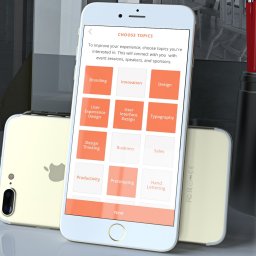Web design service a website the way roots serve a plant. Plants use their roots to anchor themselves in the ground, deliver much-needed nutrients to their leaves and achieve overall growth. Like a plant with strong roots, your website relies on good web design as a foundation to keep it alive and functioning properly.
This foundation helps establish your website on the Internet, delivers visitors to the pages where they want to go, and ultimately it leads your website to l achieve overall success through increased sales, visibility, and growth. Simply said – if you want to attract more customers to your website, you’ll need a solid web design to do so.
However, optimizing the web design for an improved user experience (UX) continues to be something that marketers struggle with. According to a report by Society of Digital Agencies, 77% of agencies believe that poor UX is a key weakness for their clients’ website, making it the biggest issue identified so far.
To address such issues, marketers and agencies continue to develop best practices that become market trends down the road. Born of experimentation and innovation, trends are the driving factors for change, which (for the most part) push an industry forward for the better. In the following, we are listing down 5 web design trends that will
1. Mobile-first Approach
The mobile-first approach to design isn’t new to 2016 and has been around for a few years now. However, with mobile phones now officially named as the primary devices used for browsing the web; more companies are realizing the importance of having a site that effectively delivers content on a smaller screen, and is rushing to get onboard.
Content is designed to fit on mobile and smaller screened devices first, and then you work up towards the larger-screened devices. Design and visuals aside, the mobile-first model and the restrictions it brings is a useful way for brands to really consider what their core content and message is that they want to communicate.
Smartphones (for the most part) come with significantly smaller screens than tablets and desktops, which limit the amount of content a user, can easily view at once. This forces brands to do away with any information or content which isn’t 100% necessary, allowing them to add it in, along with the additional visual bells and whistles for users as they switch up to larger screened devices.
Our prediction: Mobile-first isn’t a concept new for 2016, but we anticipate seeing more sites over the coming year which take a more thoughtful approach in delivering their content to smaller screens, rather mobile design being a tacked-off after-thought to the desktop build.
2. Responsive Design
We know what you’re thinking – first mobile first, and now responsive design? Neither of these is new for 2016! Although responsive design is also something which has been around for a few years, what we predict to see over the coming year is an even bigger uptake in the number of brands, both big and small, who are building responsive-based sites.
For those who may not know what responsive design is, it’s essentially an approach to building a site using CSS media queries and flexible grids/layouts to create a single, dynamic site which adjusts and re-jigs its content to best display itself on various sized devices.
It works hand-in-hand with mobile first, as mobile first designs the experience and the look, and responsive implements it. One of the bonuses of responsive design is that it allows businesses to pay for just a single site build which effectively delivers content on mobile and tablet, all the way to laptops to big-screened desktops.
Cost-effectiveness aside, the reason we anticipate even more brand’s employing this is that of an update to Google’s ranking algorithm which dropped in April 2015.
Rankings aside, what’s also interesting to note is how user behavior has changed over the last couple of years. Internet users have quickly taken to mobile-optimized sites which make their browsing experience easier, and any site which now doesn’t meet these standards simply won’t cut it.
79% of users will leave the site they’re browsing and find another if it isn’t optimized – something for brands to really consider!
Our prediction: Much the same as with mobile first – we predict a larger increase in the number of brands and businesses who implement this approach to ensure that they achieve the rankings in the search that they desire, as well as keep those all-important customers happy with the user experience.
3. Rapid Prototyping
Although not a design trend per se, rapid prototyping tools are definitely one of the most useful breakthroughs to hit the web-design world over the last year or so and are a must-have tool for any web, UI, and UX designer.
Rapid prototyping tools from services such as UX pin, Web flow, In Vision and Marvel (amongst others) all allow designers to quickly create working low and high fidelity prototypes of sites and services to gauge their usability and aesthetic, all without writing a single line of code.
Many also allow you to design in the browser and then actually launch the site itself right from the tool.
Their ease-of-use and functionality give an instant like-for-like experience of how the finished product would look and work in the browser, saving precious hours, resources and would-be setbacks.
What’s also beneficial in their application is what comes from the client side. Gone are the days of showing client static wireframes and mockups, explaining in great detail every subtle animation and transition.
Your clients get to see exactly how it works and looks, without any long, complicated conversations about user experience or transition speeds.
Our prediction: There are so many tools available today, it’s testament to how successful they are and how many businesses have already adopted them. We anticipate even more brands and designers jumping on the bandwagon in pursuit of streamlined workflows and increased efficiency.
4. UI Patterns and Framework
The mobile-first and responsive approach to web design, as well as the increasing popularity of Word Press and pre-designed themes, has had a somewhat noticeable impact how many desktop sites work and look today.
What we’re starting to see more and more are both UI and UX patterns emerge across the web where many sites look and function in very similar ways as they learn from one another to hone their user’s experience.
We won’t delve into the argument that all sites are now beginning to look too ‘samey’, but instead look at how these consistent UI and UX patterns are leading the web to become a more consistently user-friendly place to be.
With so much online competition today for brands across all sectors, they can’t afford to take major risks in their user’s journey, and if these tried-and-tested patterns and principles work, it makes sense to use them (where appropriate!) to enhance their site.
Our prediction: As these existing UI and UX patterns evolve and develop, we’ll see more and more brand’s implementing them as we move one step closer to a more unified, and consistent online browsing experience.
Keeping users happy with a streamlined UX is the top priority now as brands do away with design gimmicks in order to compete in an ever-increasingly more competitive market.
5. Video
They say a picture paints a thousand words, but a video does that tenfold. Much like with animation, a moving image on a page instantly captures the user’s attention, drawing them in so brands are able to get across their carefully constructed narrative and message.
The video, although by no means new, is long-established and versatile medium, useful for storytelling, marketing and Vlogging alike, and has several advantages over traditional photography.
Where static imagery is flat and motionless, a video is altogether more dynamic, using sound and movement to appeal to the senses and hold attention for longer.
A video is quickly taking over the internet, and the above reasons are the testament to how successful it is as a means for content delivery.
Hubspot suggests that, by 2018 79% of all consumer internet traffic will be video and that 50% of all mobile traffic is now already video based. If you’re not convinced that video is the way to go for 2016, you may have to re-think your strategy or face falling behind!.
Our prediction: Video is already huge, but it’s a trend which is set to continue even more so until it completely dominates the web and all online content.
The benefits of video outlined above are reason enough for brands to want to incorporate it, but what may be more important is the fight to stay relevant or risk falling off the bandwagon, in what are transitional times for digital content.
Conclusion
There are 100’s of ‘trends’ going on in any creativity industry at any one time, and it’s hard to pinpoint every single one, but we believe that the above are some of the more core ones to be focusing on in 2016 and beyond.
As with all trends, the above points have come about for good reason; as creative and clever thinkers across the globe have all learned and borrowed from one another to form similar patterns which we see emerge online today.
Not all of these trends may be relevant to you and your content, but it’s always beneficial to know what’s happening in the industry and to see where you’re able to improve in order to develop and progress.


